New York City Ballet: The Nutcracker / New York State Theater, Lincoln Center, NYC / November 28, 2003 – January 4, 2004
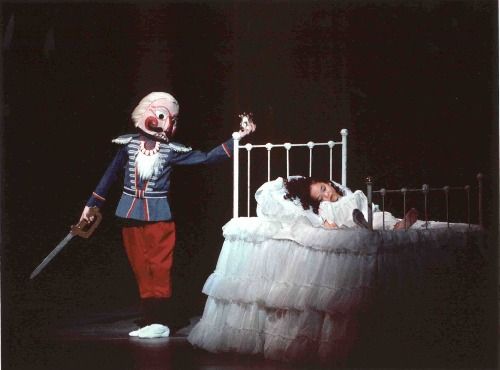 The Nutcracker
The Nutcracker
In this latter guise—conveyer of child to endless rehearsals—I, along with the other moms, dads, and nannies, occasionally got to watch a stage run-through. I remember in particular a dress rehearsal supervised by Mr. B himself. Decades later, it still provides me with a clue to the great man’s sensibility. On this occasion, matters had worked around to the point where Marie, the ballet’s juvenile heroine, terrified by the attack of the predatory mice, flees to a white-ruffled bed, stands on it for a moment, all innocence and vulnerability in her little white nightdress, then tumbles backward in a faint.
Her fall looked fine, albeit a little smudged, to me, but Balanchine wasn’t satisfied. He asked that she repeat it and was no happier with the result. He went up to her and, with typical gentle courtesy, worked directly with her—quietly and intimately, as if the two of them were alone on the stage—explaining and showing what he wanted. Then he stood back as she tried again. It was still not right in Balanchine’s eyes. Turning from her so that she didn’t see his little twitch of impatience and exasperation, he addressed the children’s ballet master and the other assistants in attendance: “Somebody teach her how to faint.”
How to bow, how to faint, how to waltz. Over years of mere glimpses of Balanchine at work and many an interview with his dancers, I came to understand that these skills were as important to the choreographer as a breathtaking mastery of the classical dance vocabulary he did so much to advance. I think it disturbed him at the core when dancers (even child dancers, because they represented his art’s future) couldn’t execute convincingly the moves that any citizen of civilization can perform almost instinctively. Balanchine, as his work reveals, gloried in the high artifice of ballet, but he never divorced his art from human nature.
Photo credit: Paul Kolnik: George Balanchine’s Nutcracker
© 2003 Tobi Tobias




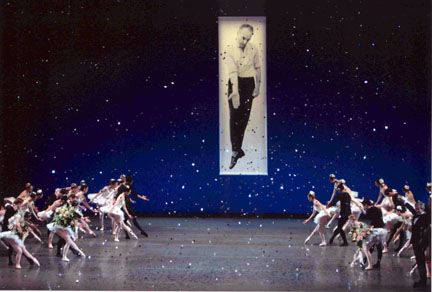 January 22, 2004 marks the 100th anniversary of George Balanchine’s birth. The celebratory “year” that is wrapped around this propitious date follows the art and social worlds’ custom of beginning in the fall and extending through the following spring. It has been and will continue to be filled with activities centering on the man who shaped twentieth-century ballet according to his singular vision. No end of exhibitions, archival undertakings, film and video screenings, symposiums, and – most important – productions of the ballets worldwide are calling attention to Balanchine’s genius. (A continually updated schedule of the happenings is available at
January 22, 2004 marks the 100th anniversary of George Balanchine’s birth. The celebratory “year” that is wrapped around this propitious date follows the art and social worlds’ custom of beginning in the fall and extending through the following spring. It has been and will continue to be filled with activities centering on the man who shaped twentieth-century ballet according to his singular vision. No end of exhibitions, archival undertakings, film and video screenings, symposiums, and – most important – productions of the ballets worldwide are calling attention to Balanchine’s genius. (A continually updated schedule of the happenings is available at 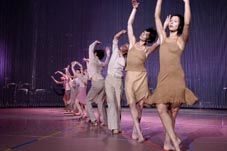 Anne Teresa De Keersmaeker’s Rain, performed by her Belgium-based company, Rosas, draws upon defining devices of early postmodern dance—the inventions and innovations of the late 1960s and the 1970s—and gives them a sleek, forceful theatricality.
Anne Teresa De Keersmaeker’s Rain, performed by her Belgium-based company, Rosas, draws upon defining devices of early postmodern dance—the inventions and innovations of the late 1960s and the 1970s—and gives them a sleek, forceful theatricality.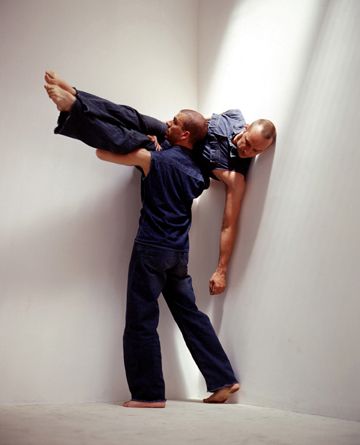 Brief chronology:
Brief chronology: Granted, the present time has not cultivated dramatic dancers like Nora Kaye, who originated the role of Pillar‘s
Granted, the present time has not cultivated dramatic dancers like Nora Kaye, who originated the role of Pillar‘s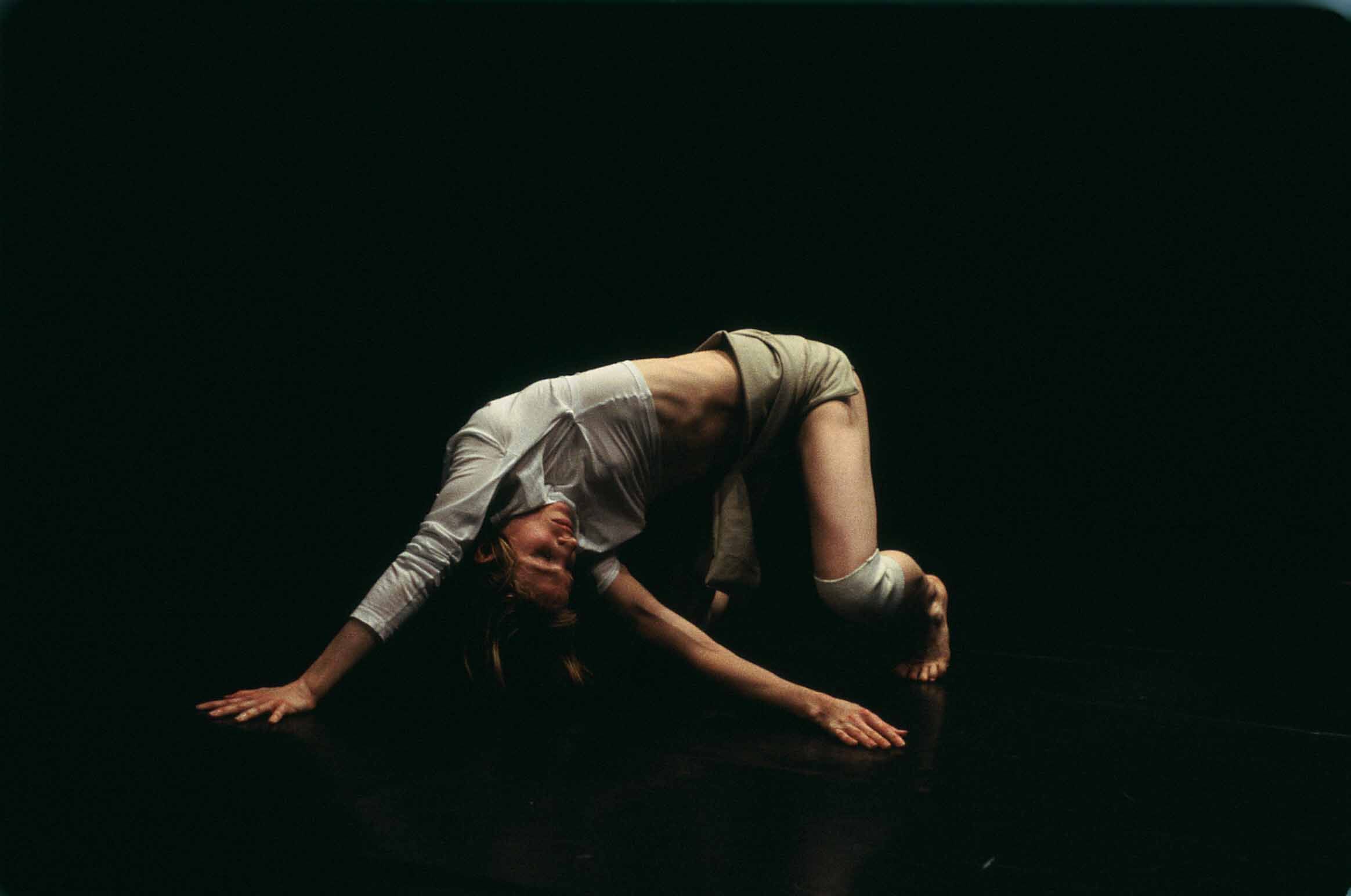 The focal point of the choreography is a young woman, the pale, grave-faced, Kristin Hollinsworth, distinguished for her long-limbed flexibility and grace.
The focal point of the choreography is a young woman, the pale, grave-faced, Kristin Hollinsworth, distinguished for her long-limbed flexibility and grace. His performance was ardent. Passion for the sheer physical experience of the bravura choreography was fused with a vivid—indeed, blazing—idea of character and situation. It was evident immediately that this guy is a creature of the stage. His energy is extravagant. His technical ability in the big moves—-the huge, powerful leaps, the multiple turns coupling speed with control—is formidable. He grabs space the way a street gang carves out its territory, but he’s never strained or sloppy about it. Launched into the air, his body remains perfectly composed, as if suspended in time as well as place, creating an indelible image. He retains the rawness and wildness of a kid left to grow up on his own. This is balanced, somewhat eerily, with mature self-possession and authority. You look at him and think: This is why I watch dancing. This is the real thing.
His performance was ardent. Passion for the sheer physical experience of the bravura choreography was fused with a vivid—indeed, blazing—idea of character and situation. It was evident immediately that this guy is a creature of the stage. His energy is extravagant. His technical ability in the big moves—-the huge, powerful leaps, the multiple turns coupling speed with control—is formidable. He grabs space the way a street gang carves out its territory, but he’s never strained or sloppy about it. Launched into the air, his body remains perfectly composed, as if suspended in time as well as place, creating an indelible image. He retains the rawness and wildness of a kid left to grow up on his own. This is balanced, somewhat eerily, with mature self-possession and authority. You look at him and think: This is why I watch dancing. This is the real thing. Here’s where you find out, perhaps, more than you want to know, more than you should know. Usually the best thing about an artist is his art. Yet we can’t help being curious.
Here’s where you find out, perhaps, more than you want to know, more than you should know. Usually the best thing about an artist is his art. Yet we can’t help being curious.